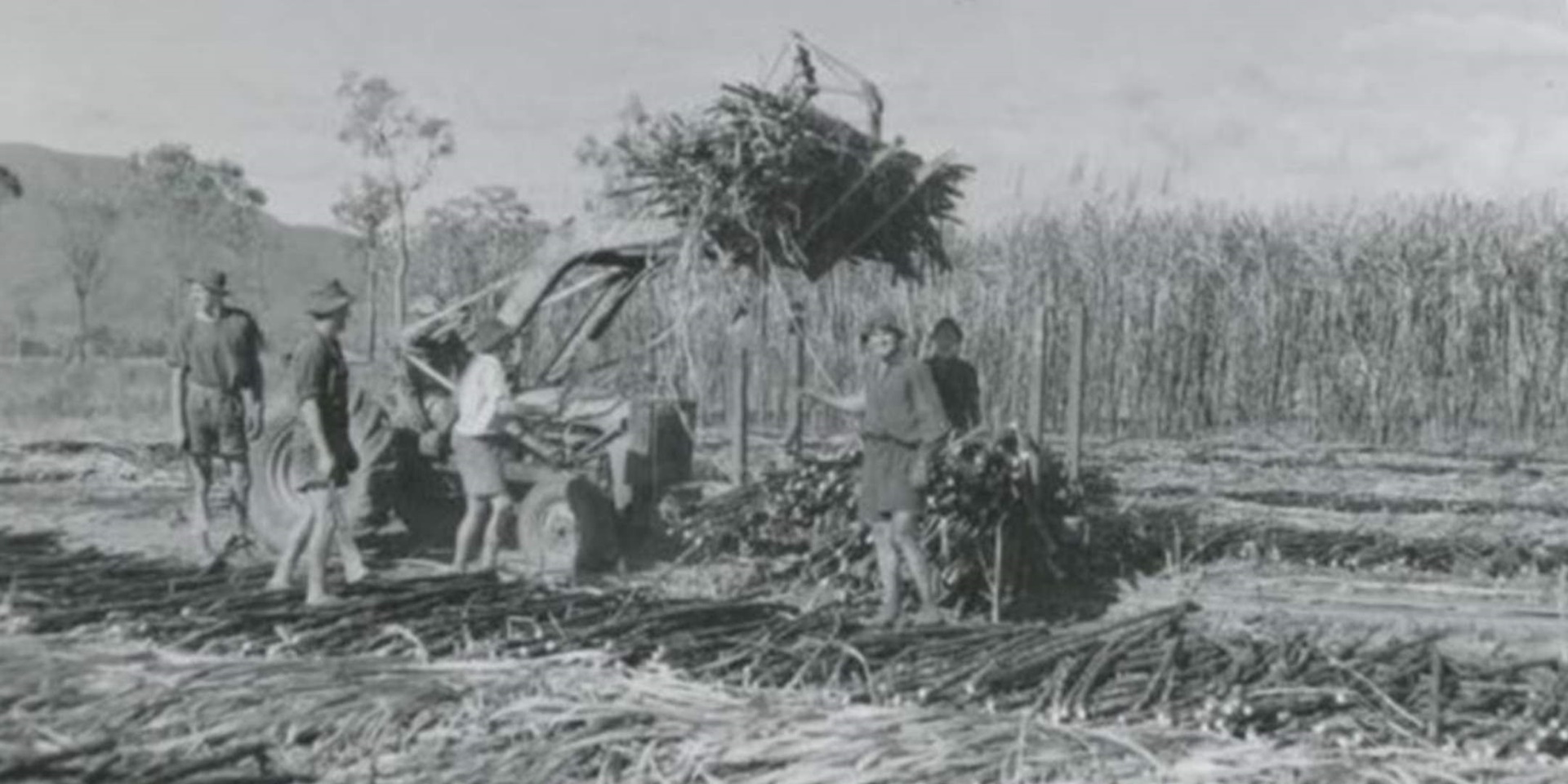

Harvesting of sugarcane in north Queensland. Courtesy Archivo Gráfico de Carta de España.
The 60th anniversary of the Spanish migration agreement
Sixty years ago today, the first contingent of assisted immigrants arrived under the Spanish migration agreement’s Operación Canguro (‘Operation Kangaroo’) to work as cane-cutters in north Queensland. The 159 young men, primarily from the north of Spain, docked in Brisbane on the Lloyd Triestino liner Toscana in 1958. They were transferred to the Wacol Migrant Centre, before being sent to the sugarcane fields in Cairns, Tully, Ingham and Innisfail. However, the origins of Spanish involvement in the Queensland sugar industry date back much earlier, to the introduction of the White Australia policy in 1901.
![The Lloyd Triestino liner Toscana berthed at a wharf in Trieste, Italy, 1952–1960. ANMM Collection ANMS0214[046]. Gift from Barbara Alysen. Reproduced courtesy International Organisation for Migration.](https://s3-ap-southeast-2.amazonaws.com/anmm-data/blog/2018/08/06/ANMS0214046.jpg)
The Lloyd Triestino liner Toscana berthed at a wharf in Trieste, Italy, 1952–1960. ANMM Collection ANMS0214[046]. Gift from Barbara Alysen. Reproduced courtesy International Organisation for Migration.
From Basque Country to cane country
Basque cane-cutters were held in particularly high regard as they were considered to be strong, hardworking and honest. By the early 1910s and 1920s, a modest Basque community had been established in the Innisfail and Ingham districts of north Queensland. This was followed by a small but steady chain migration as they sponsored relatives and fiancées from Basque Country (Euskal Herria) to cane country. In one incredible example of chain migration, Teresa Mendiolea from Ingham helped 700 Basques to immigrate to Australia!
In the years after the Spanish Civil War (1936–1939) and Second World War (1939–1945), small numbers of Spanish refugees and displaced persons arrived under the auspices of the International Refugee Organisation and the Intergovernmental Committee for European Migration. Then after lengthy negotiations, an agreement was reached between the Australian and Spanish governments to provide assisted passage for selected rural workers to cut sugarcane in Queensland. The migration scheme was advertised on radio and in newspapers and in June 1958 Operation Kangaroo departed from the Italian port of Trieste.

Group of Spanish immigrants from Plan Marta, early 1960s. Courtesy Archivo Gráfico de Carta de España.
Operation Kangaroo was quickly followed by Operation Eucalyptus on Montserrat (1959), and Operations Emu (1960), Karry (1960) and Torres (1961) on Monte Udala. In 1960 the first group of single women arrived by plane under Plan Marta, followed by the first family units in 1961. In total, 7,816 assisted Spanish immigrants arrived in Australia before the program ended in March 1963, due to fledgling diplomatic relations and ongoing concerns about unemployment and migrant selection.
Anibal and Carmen Estanillo
Anibal Estanillo Sota (1934–2001) was born in Elechas, in the autonomous community of Cantabria in northern Spain, and arrived in Brisbane in August 1958 on Operation Kangaroo. He worked as a cane-cutter in north Queensland and then joined the Snowy Mountains Hydro-Electric Scheme in southern New South Wales. Anibal’s wife Carmen Escandon Perez (b 1940), a dressmaker born in Galizano, Cantabria, arrived in Australia in June 1961. Anibal and Carmen eventually settled in Canberra and had two children.
Their daughter Carmen registered their names on the museum’s Welcome Wall, noting that ‘both worked hard to make a life for themselves, having no other family members for support and not speaking the language’. They join other Spanish cane-cutters on the Welcome Wall, from pioneer Basque farmers Vicente Balanzategui and Maria Garramiola, to indentured labourer Francisco Artiach, who fled the oppression of the Franco regime and contributed to the development of the sugar industry in north Queensland.
The museum is keen to hear from anyone who migrated through Operations Kangaroo, Eucalyptus, Emu, Karry or Torres. Please get in touch via the comments section below.
– Kim Tao, Curator
With thanks to Mr Juan Manuel Molina Lamothe, Consul-General of Spain in Sydney, and Ms Mari-Paz Moreno, Spanish writer and poet, for their assistance.
